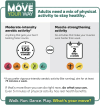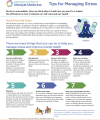Lifestyle Interventions for Treatment and Remission of Type 2 Diabetes and Prediabetes in Adults: Implications for Clinicians
- PMID: 40161282
- PMCID: PMC11949759
- DOI: 10.1177/15598276251325802
Lifestyle Interventions for Treatment and Remission of Type 2 Diabetes and Prediabetes in Adults: Implications for Clinicians
Abstract
This review is based on a presentation at the 2024 Annual Meeting of the American College of Lifestyle Medicine (ACLM), which showcased ACLM's first clinical practice guideline on Lifestyle Interventions for Treatment and Remission of Type 2 Diabetes and Prediabetes in Adults. Our goal is to offer pragmatic implications of the guideline for everyday patient care, including case presentations showing how the guideline recommendations (key action statements) can be implemented. The target audience is any clinician or healthcare professional in a community or outpatient healthcare setting involved in managing non-pregnant adults with T2D, prediabetes or a history of gestational diabetes mellitus (GDM). Unique features of the ACLM guideline include placing lifestyle interventions as the foundation of T2D management and prevention, offering strategies for sustained behavior change, and emphasizing all six pillars of lifestyle medicine: plant-predominant nutrition, regular physical activity, restorative sleep, stress reduction, social connectedness, and avoiding risky substances. This review is not intended to substitute for the full guideline, which should be read before doing the recommended actions.
Keywords: behavioral medicine; clinical practice guideline (CPG); evidence-based medicine; gestational diabetes mellitus; health coaching; lifestyle interventions; lifestyle medicine; nutrition; prediabetes; primary care integration; social determinants of health; type 2 diabetes.
Copyright © 2025 The Author(s).
Conflict of interest statement
The author(s) declared the following potential conflicts of interest with respect to the research, authorship, and/or publication of this article: Richard M. Rosenfeld has a consulting role as Director of Guidelines and Quality for the American College of Lifestyle Medicine.
Figures













References
-
- Centers for Disease Control and Prevention . National diabetes statistics report. cdc.org. 2023. https://www.cdc.gov/diabetes/php/data-research/index.html. Accessed December 2.
-
- Centers for Disease Control . Leading causes of death. cdc.org. https://www.cdc.gov/nchs/fastats/leading-causes-of-death.htm. Updated October 25, 2024. Accessed December 2, 2024.
Publication types
LinkOut - more resources
Full Text Sources
